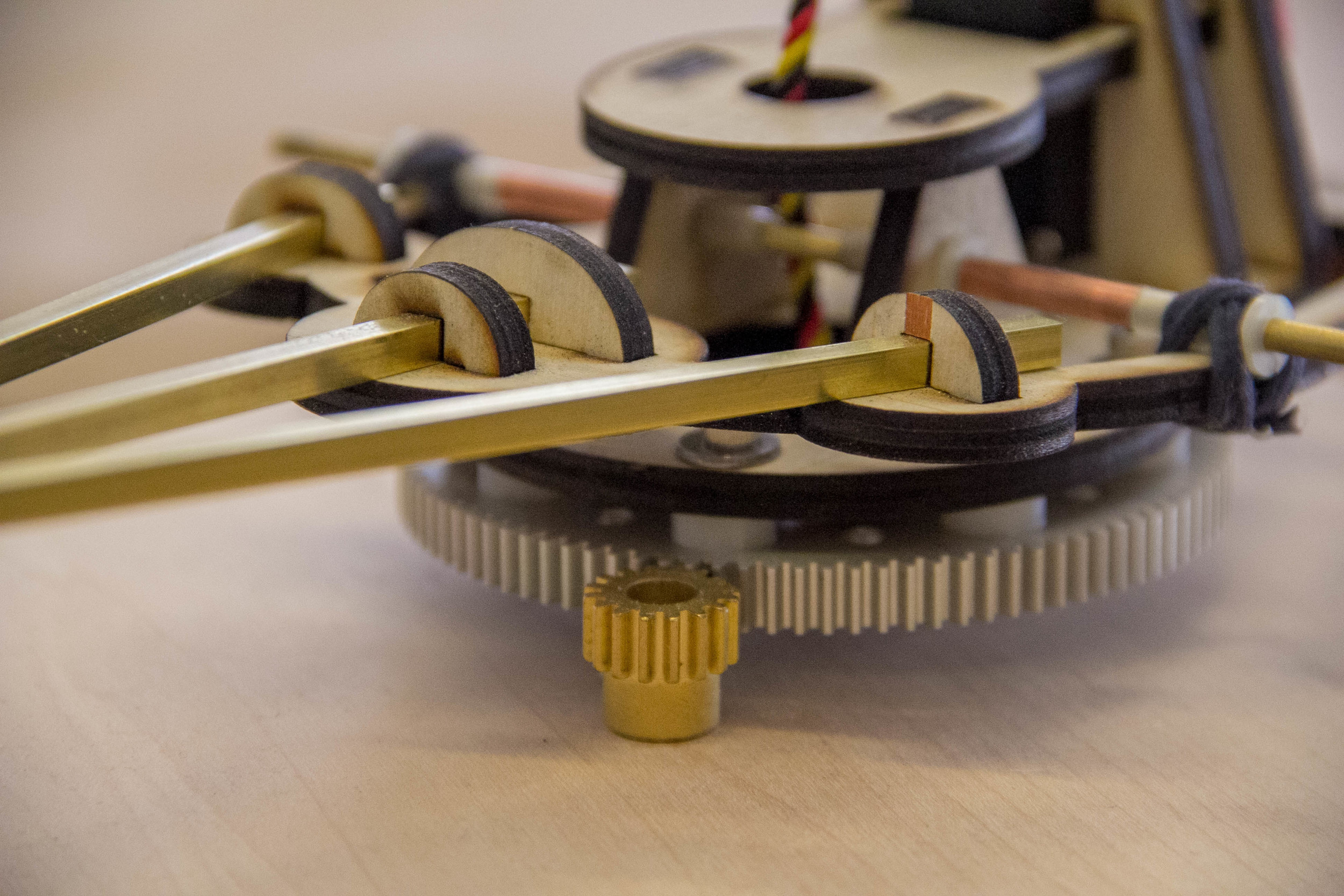Ideograph
December 2014
IDEO Chicago
A machine that translates passive unseen data into an analog record.
Featured on IDEO Labs
As a recipient of the IDEO Fortnight internship, it was my job for two weeks to do absolutely whatever I wanted in the Chicago office. Complete freedom and autonomy, in theory a dream job, can become intimidating quickly. I knew I wanted to make something interactive and I was fascinated by the physical office space and the culture that has evolved within it.
I started observing different areas of the office and talking to people about how they relate to the space around them. It quickly became clear that the real soul of the office (and, not coincidentally, the location of the espresso machine) was the kitchen.
The question was, how could I capture the energy of the kitchen, and how might I present the information in an approachable, beautiful way? I’ve always had an affinity for analog media, and I started thinking about chart recorders, which are machines that translate unseen data into a linear record. EKGs, seismographs, and polygraphs are all good examples, and these days, they’re an endangered species. Digital sensing and storage have mostly replaced analog chart recorders, which is a shame, because a physical recording that you can hold and manipulate in your hand has a certain character that gets lost in today’s ones and zeros. I wanted my machine to create tangible artifacts that could be annotated, passed around, archived, or destroyed.
I sketched and prototyped various form factors, data inputs, and analog outputs, and eventually I settled on a machine that looks like a record player, but actually it’s a record creator. I call it the IDEOgraph.
The components are fairly simple: two stepper motors run the turntable and arm, and a servo mounted on the back side of the arm lowers and raises it. A PIR motion sensor mounted over the counter in the kitchen collects data and sends it to an Arduino. I’m drawn to objects that reveal their mechanisms and manufacturing processes—the exposed movements of watches, the texture of a metal casting, the chisel marks in Japanese furniture—so I did the same with the IDEOgraph, leaving the burnt edges of the laser cuts and exposing the gears and the servo.
Within three days I was recording data in the kitchen. This data is really interesting because it’s disassociated from any one person’s unique experience and represents instead the collective movement of people through the heart of the office. I got a little hung up, however, on what the output of the IDEOgraph should be. I wanted the artifact created by the machine to have some kind of practical use or second life. My initial concept had an Exacto blade on the arm that cut into a paper disc whenever motion was sensed. I thought the accumulation of cuts would make the disc fall and drape when it was hung from the center, creating active negative spaces that would suggest the dynamic motion of the kitchen. I thought it could perhaps function as a lampshade, a bit of a nod to the classic design school “paper lamp project” almost every freshman has done. In the end, though, it just didn’t work the way I wanted it to. No matter how hard I tried, I couldn’t get the cut paper disc to look right.
By changing a single line of code and making a quick alteration to the head of the arm, I adapted the machine to draw on the disc instead of cutting it. I expected the results to be too static to capture the energy of the space, but to my surprise, the graphs were quite active, abstract and beautiful. Drawing on the paper also opened up new ways to layer the data, using different colored pens to represent different periods of time on a single disc. The concept could be pushed even further by placing multiple sensors in different locations around the office so the IDEOgraph records simultaneous activity and exposes more general patterns of movement.
The most exciting part is that I designed and created a tool that itself became an autonomous creator of interesting objects. I could hypothesize and plan for what the IDEOgraph would make, but it was impossible to know for sure until I finally plugged it in. As it turned out, it didn’t want to make what I wanted it to make. I had to learn what it wanted to do, and work with it to make something beautiful.
You can find the code, diagrams and vector files necessary to make your own IDEOgraph here and on GitHub. I could not have made the IDEOgraph without the help of many people in the Chicago office and the inspiration of being immersed in the culture at IDEO, so a big thank you to ChIDEO!











